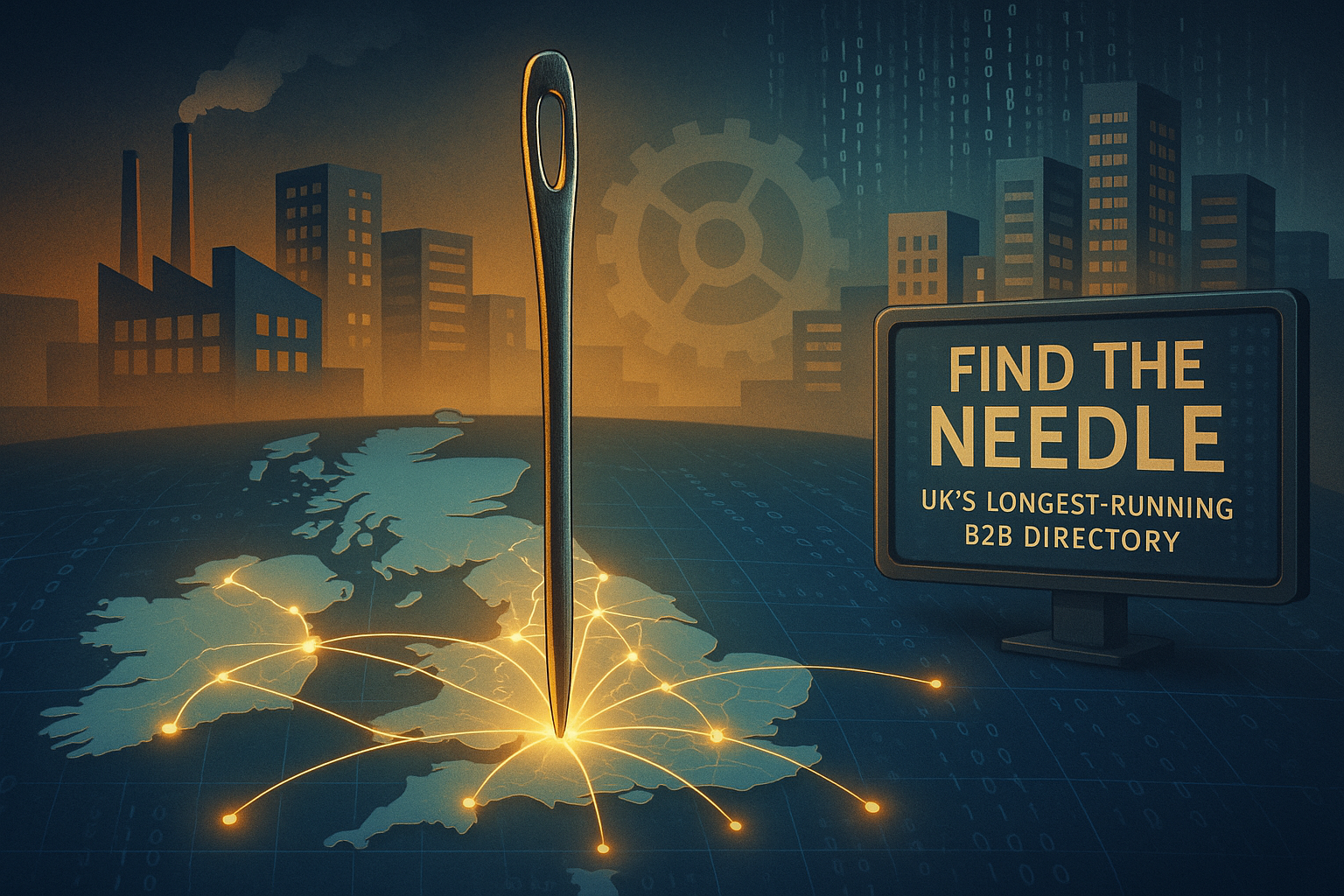Business Uninterrupted: How Preparedness Keeps the Wheels Turning
- 04 Jun 2025
- Articles
Have you ever thought about what it takes to keep your business running smoothly, even when the unexpected happens? In today's fast-paced world, the ability to adapt and overcome obstacles is crucial. Being prepared is not just about having a plan; it’s the key to keeping your business operations rolling without interruption.
Imagine facing a sudden challenge that could disrupt your workflow. With the right preparedness strategies, you can navigate these situations with confidence, ensuring minimal downtime and maintaining productivity. It's about anticipating potential roadblocks and having solutions ready at hand.
You'll discover how being proactive can transform unforeseen challenges into opportunities for growth. From securing reliable resources to building a resilient team, there are various ways you can fortify your business against unexpected disruptions. Prepare now to thrive, not just survive, when the wheels begin to wobble.
Understanding Business Continuity
Business continuity ensures that essential functions of an organization continue during and after a disruption. It involves assessing risks, preparing for potential threats, and implementing strategies to mitigate impact. It’s all about being proactive instead of reactive.
The Critical Role of Preparedness
Preparedness is your first line of defense against unexpected disturbances. By planning ahead, you build resilience into every layer of your organization. This includes developing a comprehensive business continuity plan (BCP), which outlines procedures and processes essential during a crisis.
Training and communication are crucial; employees should know their role and response actions. Regular drills can simulate real-life scenarios, enhancing readiness. Preparation also means having backup resources and suppliers. Keeping alternative vendors on standby can prevent supply chain disruptions and ensure operations run smoothly.
Common Threats to Smooth Operations
You face various threats that can disrupt continuity. Natural disasters, cyberattacks, and pandemics are just a few examples. Each can halt operations, compromise data security, or endanger employees. Preparing for such threats requires a keen awareness of their potential impact.
Risk assessment helps identify both obvious and hidden hazards. Be sure to understand how threats differ in impact, allowing you to prioritize. Establish redundancy for key systems and data backup solutions to secure critical information. Constantly update your security measures and protocols in response to evolving cyber threats.
Identifying Vulnerabilities Early
Recognizing vulnerabilities early enables you to reinforce weak points before they become failures. Conduct regular audits to identify potential gaps in your operation. Vulnerability assessments focus on areas such as IT infrastructure, supply chain, and workforce stability.
Survey your team to understand concerns they face that may not be immediately visible. This also builds a sense of ownership and responsibility. Implementing a culture of open communication encourages reporting of suspicious activities or potential risks. Use data analytics to predict trends and anticipate possible disruptions.
This proactive approach ensures ongoing adjustments and enhancements to your continuity strategies.
Strategies for Proactive Preparedness
Ensuring your business remains uninterrupted requires careful planning and execution. Focusing on a solid continuity plan, the right team, and training ensures you’re prepared for any emergency.
Developing an Effective Continuity Plan
An effective continuity plan acts as your business's blueprint during unforeseen disruptions. Start with a risk assessment, identifying potential threats specific to your operations. Prioritize them to develop strategies that minimize impact. Detailing the roles and responsibilities of key personnel ensures clarity during emergencies.
Outline communication protocols to keep everyone informed and connected. Include a review and update schedule to keep the plan relevant and resilient.
Consider utilities and essential resources, such as emergency water delivery—SFS's potable delivery services provide drinking potable water supply, ensuring access to clean water during critical times and helping maintain operations during disruptions.
Assembling a Reliable Response Team
Assembling a response team means selecting individuals with diverse skills who can react swiftly. Choose members not only for their expertise but also their ability to remain calm under pressure. Designate a team leader to coordinate efforts and make quick decisions.
Ensure the team understands the continuity plan and their roles in it. Regular meetings and scenario-based drills help solidify these roles. Cross-training team members ensures coverage in case someone is unavailable. Encourage open communication and feedback to refine the team's effectiveness continually.
Training Employees for Emergency Readiness
Training your employees enhances their confidence and capability in crisis situations. Conduct regular training sessions that go beyond simple fire drills. Focus on enhancing practical skills like first aid, evacuation processes, and communication protocols.
Interactive workshops simulate real-life emergencies, helping employees grasp their roles better. Develop a feedback loop to refine the training based on their insights and needs. Tailor training content to reflect changing operational landscapes and emerging threats. Preparedness becomes part of your company culture, empowering everyone to act decisively.
Keeping Your Business Resilient
Maintaining resilience is key to thriving in unpredictable times. By focusing on technology integration, strengthening relationships with vendors and partners, and regularly evaluating preparedness plans, you can ensure business continuity. These strategies provide a comprehensive approach to keeping operations smooth even when faced with challenges.
Leveraging Technology for Continuous Operations
Embrace technology to enhance your ability to adapt to unexpected disruptions. Implement cloud-based services to ensure data is accessible from anywhere, keeping operations running smoothly. Invest in collaboration tools like Slack or Microsoft Teams to keep communication seamless, regardless of location.
Automation can take over routine tasks, freeing up human resources for critical decision-making. Cybersecurity measures are crucial; protect sensitive data with antivirus software and firewalls.
Consider backing up data regularly to prevent losses during cyber incidents. Keeping your technology infrastructure updated ensures it supports your business goals and adapts to change swiftly.
Building Strong Vendor and Partner Networks
Forge and maintain robust relationships with your vendors and partners. Open communication channels prove essential in ensuring a mutual understanding of expectations and requirements. Diversify your supply chain by working with multiple vendors, reducing the risk of dependency on a single source.
Regularly evaluate and vet potential partners based on their reliability and capacity to deliver. Establish clear contractual terms and maintain frequent contact to address any emerging issues promptly. Cultivating a strong network acts as a safety net, enabling businesses to remain agile and responsive to evolving market demands.
Evaluating and Updating Preparedness Plans
Regularly assess your preparedness plans to keep them relevant to current challenges. Conduct periodic risk assessments to identify vulnerabilities and update strategies accordingly. Simulation exercises provide valuable insights into potential gaps in your emergency response, demonstrating the need for adjustments.
Review and update emergency contact lists and protocols as personnel and roles change. Include alternative communication channels to ensure all team members can stay informed during a crisis.
Keeping plans current with ongoing training helps your team respond effectively when it matters most. Frequent evaluation fortifies your business foundation, ensuring you're equipped to handle whatever comes your way.
Conclusion
Preparedness isn’t just a precaution—it’s a strategic advantage. In a world filled with unpredictability, having a solid plan and a well-trained team can mean the difference between disruption and continuity.
By investing in technology, strengthening relationships, and regularly refining your continuity strategies, you position your business to weather storms and seize unexpected opportunities. When you're proactive rather than reactive, your business stays not just afloat—but moving forward, uninterrupted.







